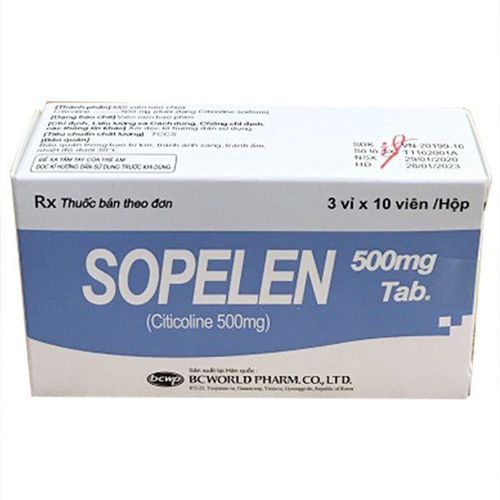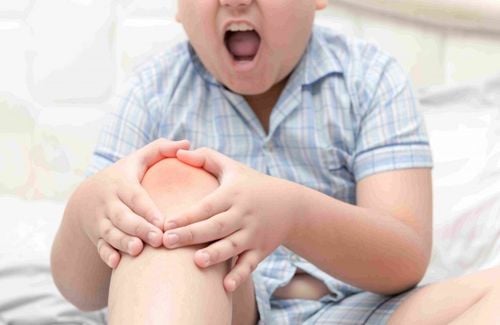This is an automatically translated article.
Children always require constant movement to meet the physical development stage. Therefore, common injuries in children are very common and can occur in every family. Parents need to know the injuries in children and how to promptly handle them to ensure the safety of their children.
1. Cuts, scrapes and bruises
Children are in a growth phase that will not stop working. Children are constantly running, jumping, climbing and falling a lot. The hands, elbows and knees are the most prone to injury in children. You can treat minor skin tears, scrapes, and bruises for your child at home.
Accordingly, for cuts and scrapes of the skin, it is necessary to wash the area under running water until the sand and dirt adhere to it. You can use mild soap. Apply some antibiotic ointment after washing the injured area in children and cover it. Call your doctor if the skin cut is large, deep, or if the area becomes red and swollen, or you see pus draining from the wound - these are signs of a serious infection.
For bruises, soothe the swelling with an ice pack wrapped in an absorbent cloth. If your child has trouble walking or moving and the swelling doesn't go down, call the doctor.
2. Back and shoulder problems
If your child carries a backpack that is too heavy or carries a bag over one shoulder, he or she may experience back, neck and shoulder pain along with posture problems. The American Academy of Pediatrics recommends that children use two shoulder straps and backpacks no more than 10% to 20% of their body weight.
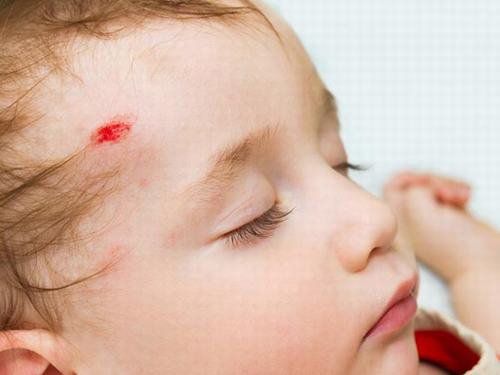
Các vết xước bầm tím là chấn thương ở trẻ em khá thường gặp
3. Splinters
Children, especially young children, often love to explore, touch and grasp everything around them. This is the cause of common injuries in children in general and makes it easy for pieces of wood, thorns, and other sharp debris to get into the baby's skin.
When the child has a splinter in the skin, gently rub it with a needle that has been disinfected with alcohol cleaner, then pull it out with clean tweezers. If this doesn't work, try touching the area with duct tape to see if that helps remove the splinter. Once the splinter is removed, apply antibiotic ointment to the site of the lesion to help keep it from becoming infected.
4. Joint deformity and sprain
Baseball, football, gymnastics are sports that are easy to cause injuries in children. Most kids enjoy participating in certain sports, and that can lead to muscle, ligament, and tendon tears. The most common joint where sprains are sprained is the ankle.
If your child has a sprain, quick ice, immobilization, and elevation of the leg can help improve symptoms. Over-the-counter pain relievers such as Acetaminophen or Ibuprofen may be helpful. Call the doctor if the child cannot walk or move the injured area. This condition suggests the child may have a broken bone and needs an X-ray to check.
5. Fracture is one of the injuries in children
Common causes of fractures in young children are falls from skateboards, bicycles, collisions and children reaching out to try to support. At this point, it is natural for a fracture event to occur. The fracture site will quickly swell, deform, lose mobility, and the child will be painful when pressed or moved. Call 911 immediately if you see the tip of a broken bone piercing through the skin.
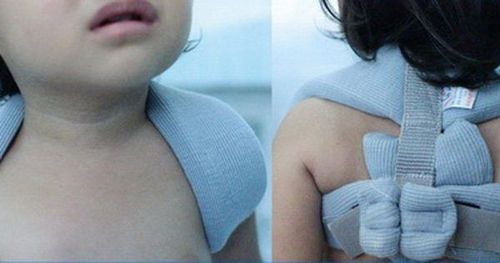
Gãy xương là một trong những chấn thương ở trẻ em
6. Head Injury
Children in the United States suffer between 1 million and 2 million head injuries while participating in sports and recreational activities each year. For children under the age of 14, the most common causes of head injuries are cycling, playing soccer, baseball, basketball, and skateboarding. If your child gets hit on the head, keep an eye on them constantly. Symptoms of brain damage after a head injury are often immediate, but not always.
Call the doctor at once if your child is unconscious, dizzy, or complains of vision such as blurred vision or a severe headache that gradually increases.
7. Broken teeth in children
One of the common injuries in children is broken, chipped, chipped teeth. Nearly 50% of children will have some damage to their teeth during childhood when going out, falling, participating in sports and even... if fighting or struggling. Trauma that causes tooth fracture often occurs in the front teeth.
Call your dentist if your child's teeth are broken, loose or sensitive. If a baby tooth is completely lost, don't try to put it back in the gum. But if it's a permanent tooth, rinsing with water, putting it back in the socket as quickly as possible, and seeing a dentist can save a tooth.
8. Nurse's Elbow (Nursemaid's Elbow)
Nursemaid's Elbow, also known as semidislocation of the radial head, is a condition in which a child's elbow is pulled out of place. This can happen when a caregiver pulls a child's arm or swings a toddler's arm. You may notice your child keeping their arm still and not using it.
Because a child's bones and muscles are still developing, it doesn't take long to pull part of the elbow out of the original dislocation. Therefore, when a child is suspected of having an elbow dislocation, it is important to take the child to the doctor quickly so that the doctor can easily reposition the elbow.
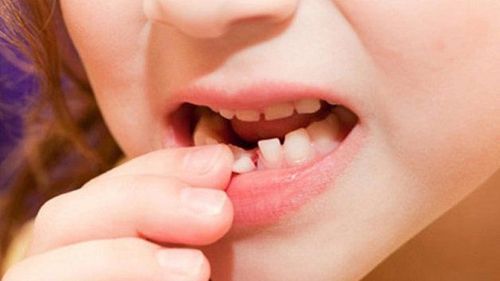
Một trong các chấn thương thường gặp ở trẻ là gãy, sứt, mẻ răng
9. Sever's Disease
Sever's disease occurs when there is aseptic inflammation of the cartilage of the heel. The name sounds scary, but this is a fairly common heel injury in growing children. It usually occurs in children 9 to 13 years of age, especially those who play traumatic sports where a lot of running or jumping is required, such as football, basketball or gymnastics, when the plaques grow. in the heel becomes inflamed and causes your child a lot of pain. Leg pain usually goes away with rest, ice, and immobilization. As the growth plate matures (usually when your child is over 13 years old), the condition should go away.
In summary, having knowledge and early recognition of common injuries in children above will help parents be more confident when taking care of their children at home. When all kinds of trauma occur, the right intervention will ensure the healthy development of the child in the future and the child still has the opportunity to have fun and exercise like friends of the same age.
Please dial HOTLINE for more information or register for an appointment HERE. Download MyVinmec app to make appointments faster and to manage your bookings easily.
Reference source: webmd.com



